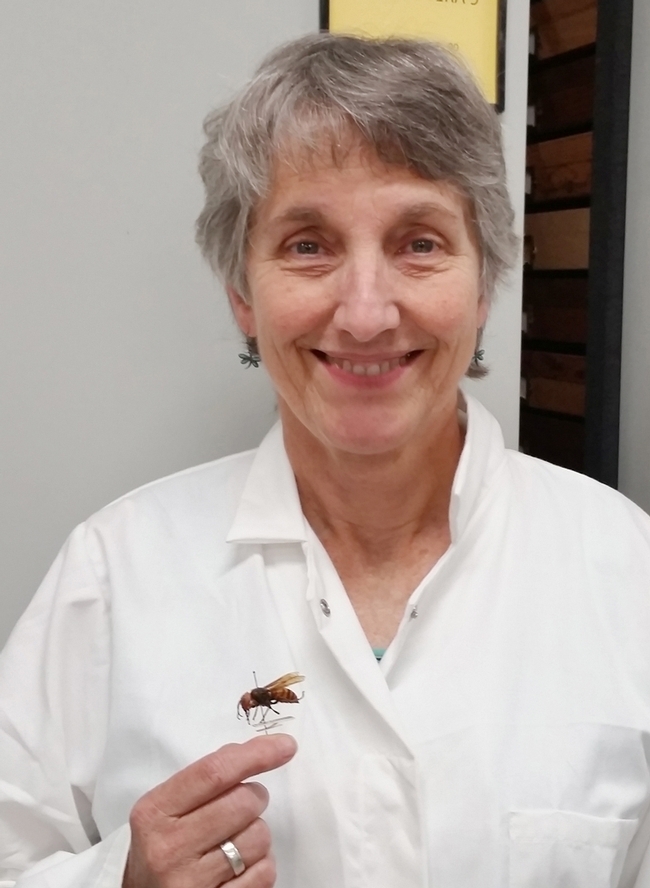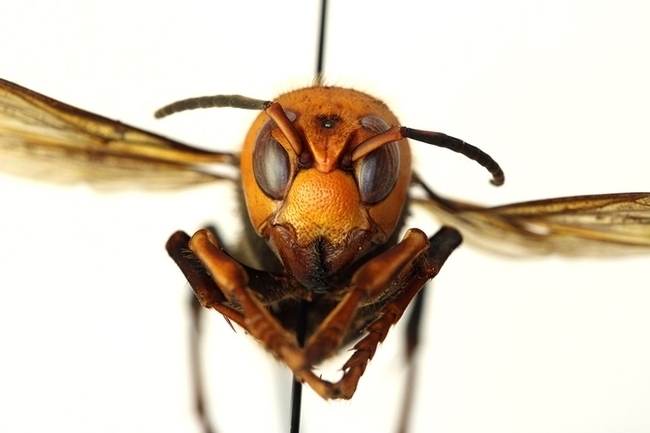
Entomologists cringe every time someone substitutes the moniker, "murder hornet," for the Asian giant hornet, Vespa mandarinia.
They probably think this qualifies as murder in the first degree!
No, no, no! Don't call it a "murder hornet!"
A single colony of the Asian giant hornet was found and destroyed Sept. 18, 2019 in Nanaimo, Vancouver Island, Canada, and a single dead hornet was found Dec. 8, 2019 in nearby Blaine, Wash. Since then, it also has been sighted-- and destroyed--in both Canada and Washington state.
"In 2020, both Washington and Canada have had new confirmed sightings of Asian giant hornet and in October of 2020, WSDA conducted the first-ever eradication of an Asian giant hornet nest in the United States," according to the Washington State Department of Agriculture site.
"Asian giant hornet attacks and destroys honey bee hives. A few hornets can destroy a hive in a matter of hours. The hornets enter a 'slaughter phase' where they kill bees by decapitating them. They then defend the hive as their own, taking the brood to feed their own young. They also attack other insects but are not known to destroy entire populations of those insects."
"While they do not generally attack people or pets, they can attack when threatened. Their stinger is longer than that of a honey bee and their venom is more toxic. They can also sting repeatedly."
"If it becomes established, this hornet will have negative impacts on the environment, economy, and public health of Washington State."
Globally recognized hymenopterist Lynn Kimsey, director of the Bohart Museum of Entomology and UC Davis professor of entomology, will deliver an hourlong presentation from 1 to 2 p.m. on Thursday, Feb. 18 as part of the UC Davis Biodiversity Museum Month program. She also will field questions. To access the program, link to https://ucdavis.zoom.us/j/95724669897.
Kimsey, a two-term past president of the International Society of Hymenopterists, shed some light on the giant insect in an interview with urban entomologist Michael Bentley on his BugBytes podcast. Click here to listen.
They talked about the history of the hornet, its biology, its range, its behavior, its stings, and the news media frenzy.
The Asian giant hornet is "one of about a dozen or so species in this genus," Kimsey said. She described them as "comically large and menacing looking."
The specimens in the Bohart Museum of Entomology are about 1.5 inches long. "I've never seen one two inches long. But it's a big animal--no question about it."
Kimsey agreed that the Asian giant hornet "can deliver a lot of venom" and "can sting repeatedly." But in her opinion, "the honey bee sting is the worst."
Other points Kimsey brought out included:
- The Asian giant hornets probably arrived here in cargo ships
- The larvae and pupae are restaurant-fare in some parts of Asia and are quite the delicacy
- The coronavirus pandemic has resulted in fewer cargo ships arriving in the United States from Asia, and thus fewer opportunities for hitchhikers.
Kimsey and two other wasp experts published “The Diversity of Hornets in the Genus Vespa (Hymenoptera: Vespidae; Vespinae); Their Importance and Interceptions in the United States,” in the journal Insect Systematics and Diversity last summer. Lead author Allan Smith-Pardo, U.S. Department of Agriculture Animal and Plant Health Inspection Service (APHIS), and co-authors James Carpenter of the American Museum of Natural History's Division of Invertebrate Zoology, and Kimsey covered 22 species of hornets, including V. mandarinia.
Vespa species are “primarily predators of other insects, and some species are known to attack and feed on honey bees (Apis mellifera), which makes them a serious threat to apiculture,” the authors wrote in their abstract.
Be sure to watch the UC Davis program Thursday.
Said Kimsey: "l will focus on the biology of common pest paper wasps, like western yellowjacket, European paper wasp and the bald-faced hornet and of course, true hornets and whether they're a threat to California."
Attached Images:
